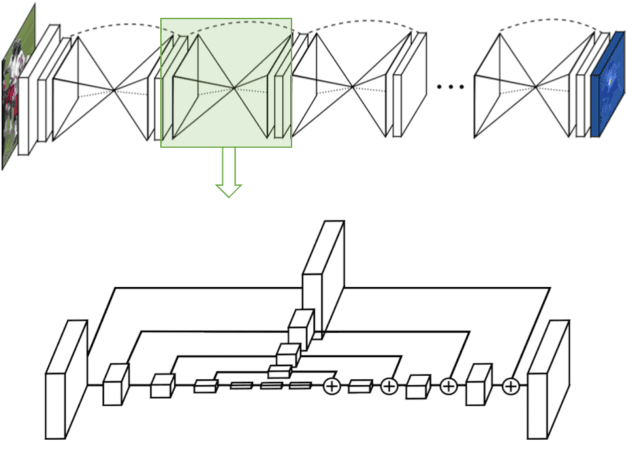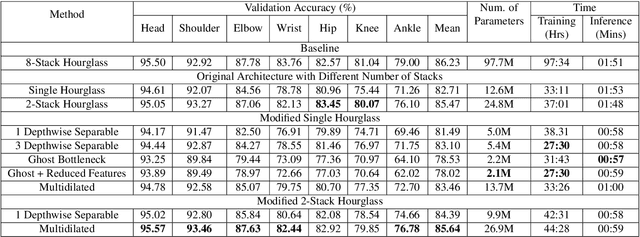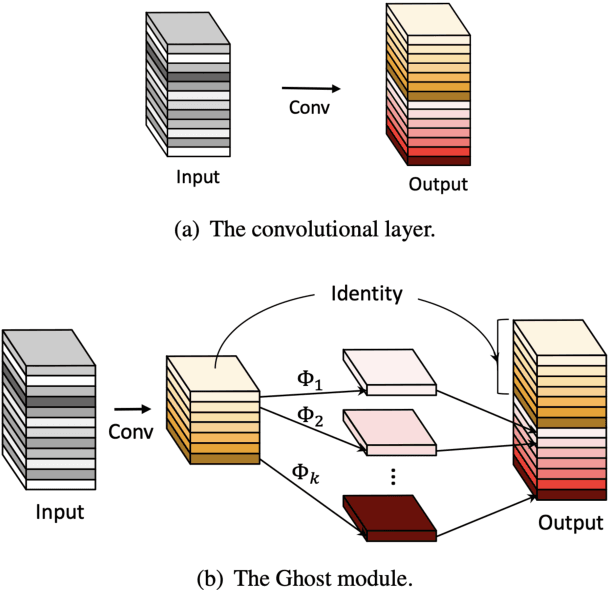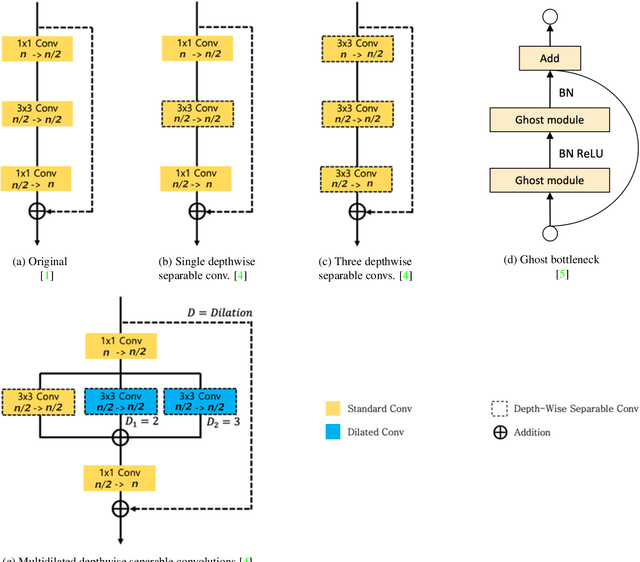Lighter Stacked Hourglass Human Pose Estimation
Paper and Code
Jul 28, 2021



Human pose estimation (HPE) is one of the most challenging tasks in computer vision as humans are deformable by nature and thus their pose has so much variance. HPE aims to correctly identify the main joint locations of a single person or multiple people in a given image or video. Locating joints of a person in images or videos is an important task that can be applied in action recognition and object tracking. As have many computer vision tasks, HPE has advanced massively with the introduction of deep learning to the field. In this paper, we focus on one of the deep learning-based approaches of HPE proposed by Newell et al., which they named the stacked hourglass network. Their approach is widely used in many applications and is regarded as one of the best works in this area. The main focus of their approach is to capture as much information as it can at all possible scales so that a coherent understanding of the local features and full-body location is achieved. Their findings demonstrate that important cues such as orientation of a person, arrangement of limbs, and adjacent joints' relative location can be identified from multiple scales at different resolutions. To do so, they makes use of a single pipeline to process images in multiple resolutions, which comprises a skip layer to not lose spatial information at each resolution. The resolution of the images stretches as lower as 4x4 to make sure that a smaller spatial feature is included. In this study, we study the effect of architectural modifications on the computational speed and accuracy of the network.
 Add to Chrome
Add to Chrome Add to Firefox
Add to Firefox Add to Edge
Add to Edge